Salesgear Alternatives
Comparing 10 Salesgear alternatives. An in-depth look at features, pricing, and performance to help you choose the right platform.
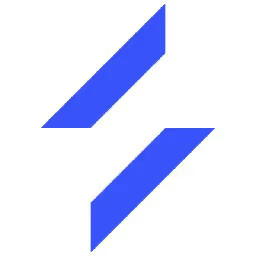
Salesgear is a tool many sales teams choose for good reasons. It performs well for outreach automation and sequence management. It can be a solid choice to make communication with prospects efficient and keep track of engagement.
However, some users find its reporting can be limited, and integrations may not always be seamless. This can lead teams to look for other options. We analyzed the best alternatives, comparing their pros and cons to Salesgear, to help you shortlist your top options. Let's get started.
Add Digital Workers to Your Sales Team with 11x
Consider 11x if your goal is to add digital workers to your sales operations. The platform provides autonomous agents that manage specific sales functions, working alongside your current team to handle various tasks.
11x is a go-to-market platform that uses AI agents to handle sales processes. Its agent, Alice, finds prospects, runs outreach on email and LinkedIn, and keeps the CRM updated. Another agent, Julian, qualifies inbound leads and books meetings. The platform unifies data enrichment, outreach, and email warmup, removing the need for separate tools.
Salesgear Alternatives
We will now review the top Salesgear alternatives in detail. Each review covers pricing, core features, and how they stack up against Salesgear in terms of benefits and potential downsides.
1) Outreach
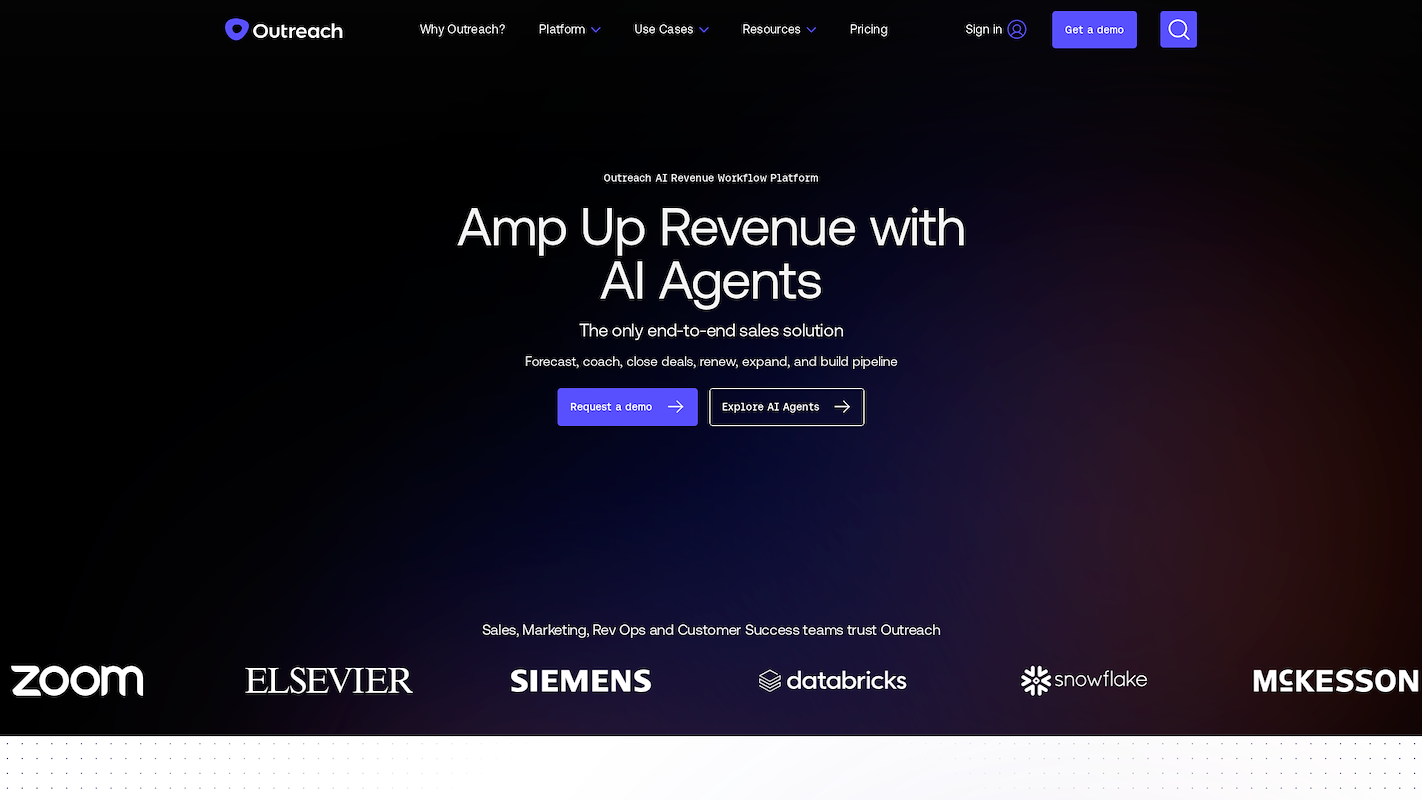
Outreach is a revenue workflow platform that uses AI for sales execution. It combines AI agents and data-driven workflows to help teams forecast, coach, close deals, and build a pipeline. The platform emphasizes security for sensitive customer data.
Common uses include the organization of business books, outbound communication to increase pipeline, and deal management with AI insights.
Outreach's Main Features
- Offers AI-driven rep coaching through its tool, Kaia, which provides meeting summaries, Q&A, and analytics.
- Analyzes buyer sentiment by detecting topics and feelings across meetings, calls, and emails.
- Delivers real-time content guidance during live calls with prompts and content cards via Kaia.
- Surfaces risks, next steps, and recent activity on any account or deal with Smart Account and Deal Assist.
How Outreach Compares to Salesgear
Average Review score: 4.3/5 stars based on 3,479 G2 reviews.
- Outreach provides AI-driven coaching through its Kaia tool for meeting summaries and analytics, a more advanced feature than the standard tools in Salesgear.
- It analyzes buyer sentiment across communications. This provides deeper insights compared to the engagement tracking available in Salesgear.
- The platform includes Smart Account and Deal Assist to surface risks and next steps. This function offers more in-depth deal management than Salesgear's outreach automation.
- As a unified platform, Outreach combines sales engagement with revenue intelligence. This can offer a more integrated workflow than Salesgear, where users sometimes note integration issues.
Where Outreach May Fall Short of Salesgear
- Outreach is a comprehensive platform, which can result in a higher price and a steeper learning curve compared to Salesgear's more focused approach to outreach automation.
- The tool sometimes presents integration and data sync challenges, according to user feedback. This can interrupt workflows, which might be less of an issue with Salesgear’s more straightforward setup.
- Its extensive features can sometimes cause the platform to load slowly. In contrast, Salesgear's focused design may offer a quicker experience for users who only need core outreach functions.
- Some users report occasional issues with Outreach's sequencing functions. Salesgear, on the other hand, is generally considered very reliable for sequence management and automation.
Pricing and Cost-Effectiveness
Outreach does not list public pricing, but user reviews indicate a high perceived cost. This suggests a larger investment than Salesgear, reflecting its comprehensive features. For a detailed quote, we recommend visiting Outreach's official website.
2) Salesloft
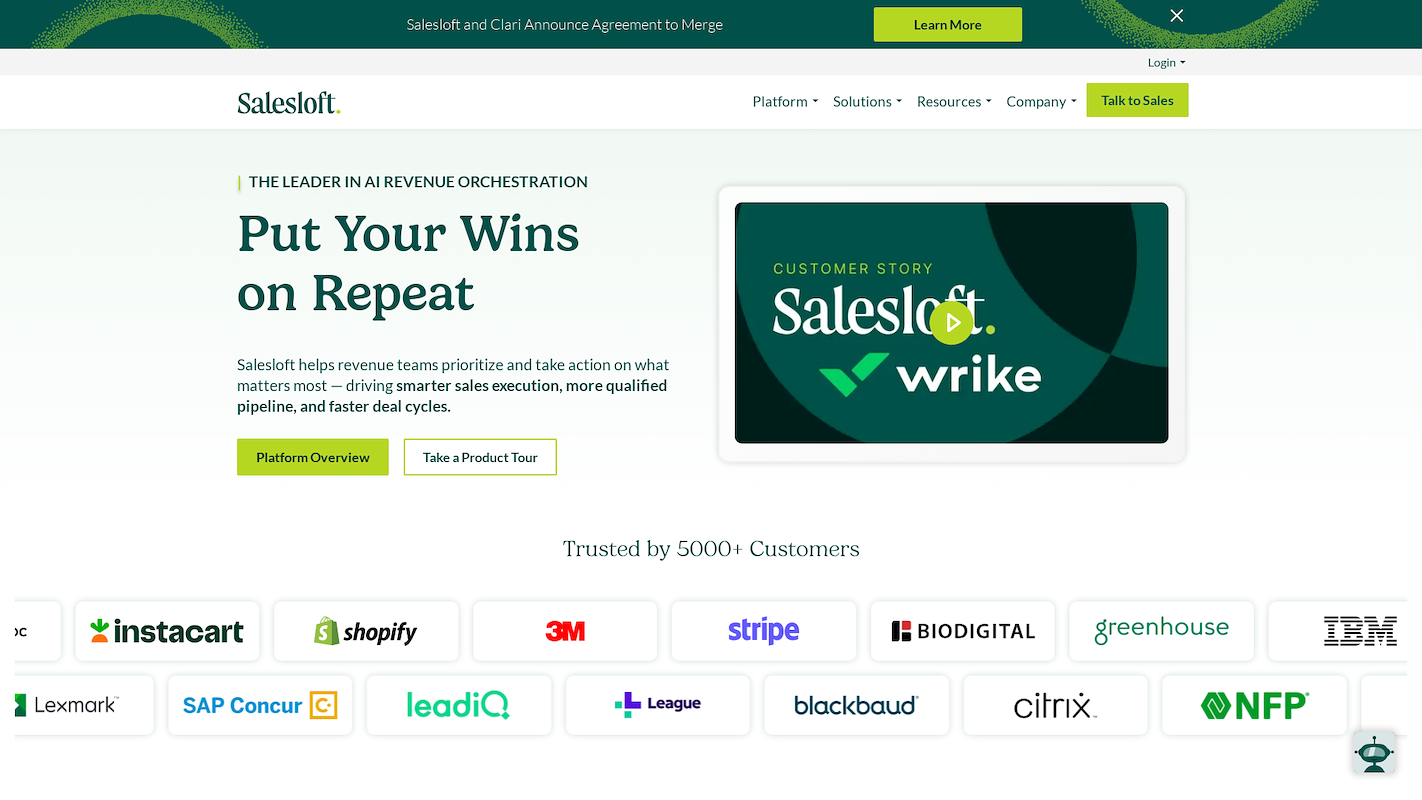
Salesloft is a revenue orchestration platform that aligns sales engagement, conversation intelligence, and deal management in a single workflow. AI agents surface buyer signals, prioritize next actions, and automate tasks for revenue teams.
The platform helps build qualified pipeline and accelerate opportunities. It is designed to shorten deal cycles and allow for more confident sales forecasts, with a focus on team productivity and performance.
Salesloft's Main Features
- Recommends the right actions at the right moments with its AI prioritization engine, Rhythm.
- Engages website visitors with real-time, personalized conversations using Drift AI chat agents.
- Manages the deal pipeline with AI insights into risk and combines real-time data with seller input for forecasting.
- Automates and optimizes sales processes with Conductor AI, a set of outcome-first AI agents.
How Salesloft Compares to Salesgear
Average Review score: 4.5/5 stars based on 4,145 G2 reviews.
- Salesloft offers an AI prioritization engine, Rhythm, which recommends specific actions to sales reps. This provides more direct guidance than the general sequence automation in Salesgear.
- Its Conductor AI agents automate complete sales workflows. This expands automation beyond the email and outreach sequences that Salesgear manages.
- The platform provides AI-driven insights into deal risk for more accurate forecasting. This is a more advanced analytical feature compared to Salesgear's standard reporting.
- Salesloft uses Drift AI chat agents to engage website visitors in real time. This introduces an inbound lead qualification function not present in Salesgear's primary toolset.
Where Salesloft May Fall Short of Salesgear
- Salesloft often requires a larger budget compared to Salesgear. Its comprehensive feature set can introduce complexity for teams that only need core outreach automation, a function where Salesgear is more focused.
- Some users report occasional issues with Salesloft's calling and email functions. In contrast, Salesgear is often noted for its reliability in core sequence management and automation tasks.
- The platform's extensive capabilities may create a steeper learning curve. Teams might find Salesgear's more focused design allows for a quicker setup and adoption for basic outreach campaigns.
Pricing and Cost-Effectiveness
Salesloft does not list public pricing, but its high perceived cost suggests it is a more significant investment than Salesgear. While Salesgear offers a budget-friendly option for core outreach, Salesloft's cost may be justified for teams needing a comprehensive platform. For a detailed quote, we recommend visiting Salesloft's official website.
3) Apollo.io
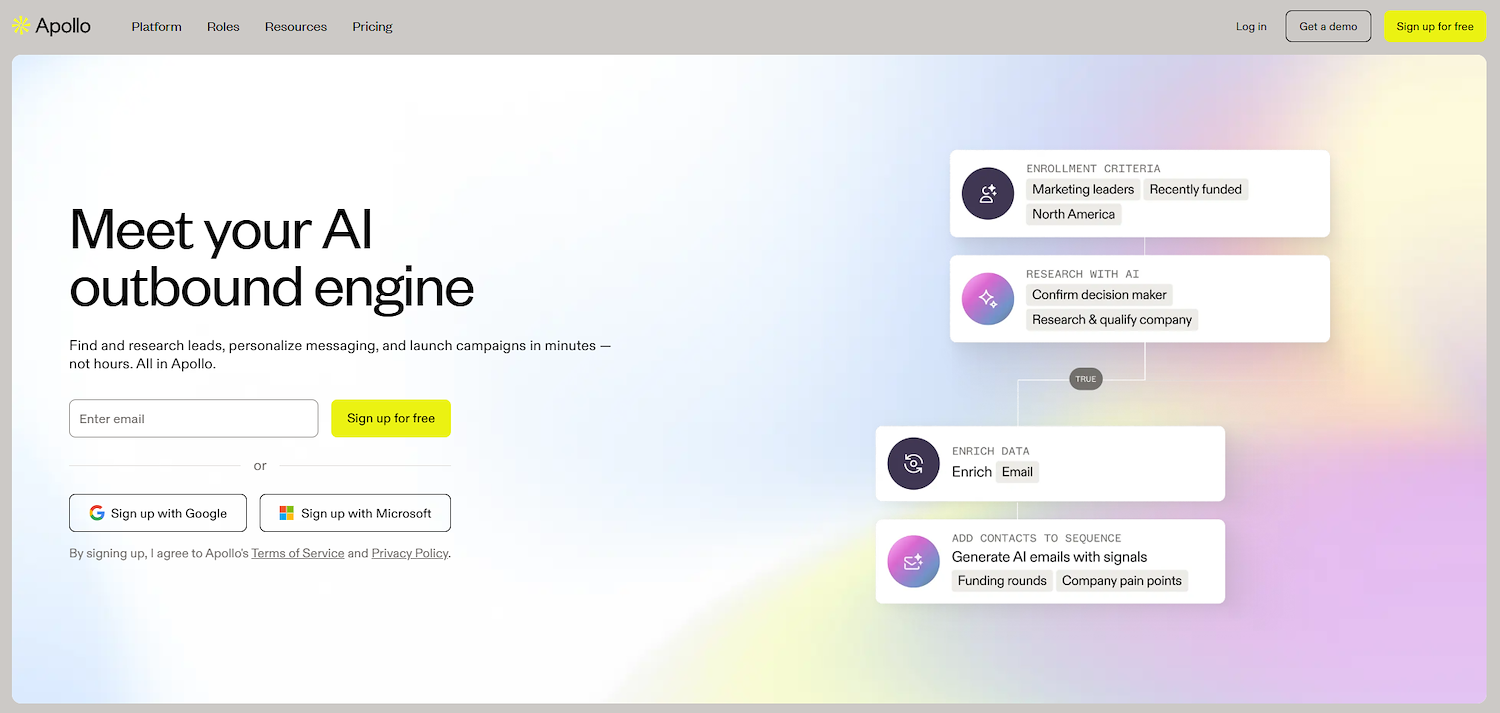
Apollo.io is a sales intelligence and engagement platform. It offers a database of B2B contacts and companies for lead discovery. Users find contact details and then use automated sequences for outreach.
The platform combines data, outreach tools, and analytics in one system. This allows teams to manage the sales pipeline from a single interface and supports go-to-market operations.
Apollo.io's Main Features
- Offers a searchable database of B2B contacts and companies to find new leads and their contact details.
- Integrates its data foundation with sales engagement tools and analytics in a single system.
- Allows teams to manage the full sales pipeline from one interface, from discovery to outreach.
How Apollo.io Compares to Salesgear
Average Review score: 4.7/5 stars based on 8,904 G2 reviews.
- Apollo.io includes a native B2B database with over 210 million contacts. This provides lead discovery within the platform, unlike Salesgear, which focuses on outreach to existing lists.
- The platform combines sales intelligence with engagement tools in one system. This differs from Salesgear, where users may need separate tools for data enrichment and detailed analytics.
- It offers lead enrichment and validation features to ensure data accuracy. This is a more advanced data-handling function compared to the standard contact management in Salesgear.
- Apollo's Intelligence Engine provides recommendations and analytics to guide sales actions. This offers deeper insights than the reporting capabilities available in Salesgear, which some users find limited.
Where Apollo.io May Fall Short of Salesgear
- Some users find Apollo.io's contact data occasionally requires verification. This contrasts with Salesgear, where teams typically use their own verified lists for focused outreach sequences.
- The tool's all-in-one nature can be complex for some teams. Salesgear offers a more focused solution for users who only need dedicated outreach automation, which can be simpler to manage.
- Its wide range of features may create a steeper learning curve for new users. Salesgear's specialized design for sequence management can allow for a faster implementation within sales teams.
Pricing and Cost-Effectiveness
Apollo.io offers transparent pricing, including a free plan and paid tiers starting at $49 per user monthly. This model can be more cost-effective than Salesgear for teams that also need a B2B database, which is included in Apollo's price. For detailed pricing, visit Apollo.io 's official website.
4) HubSpot Sales Hub
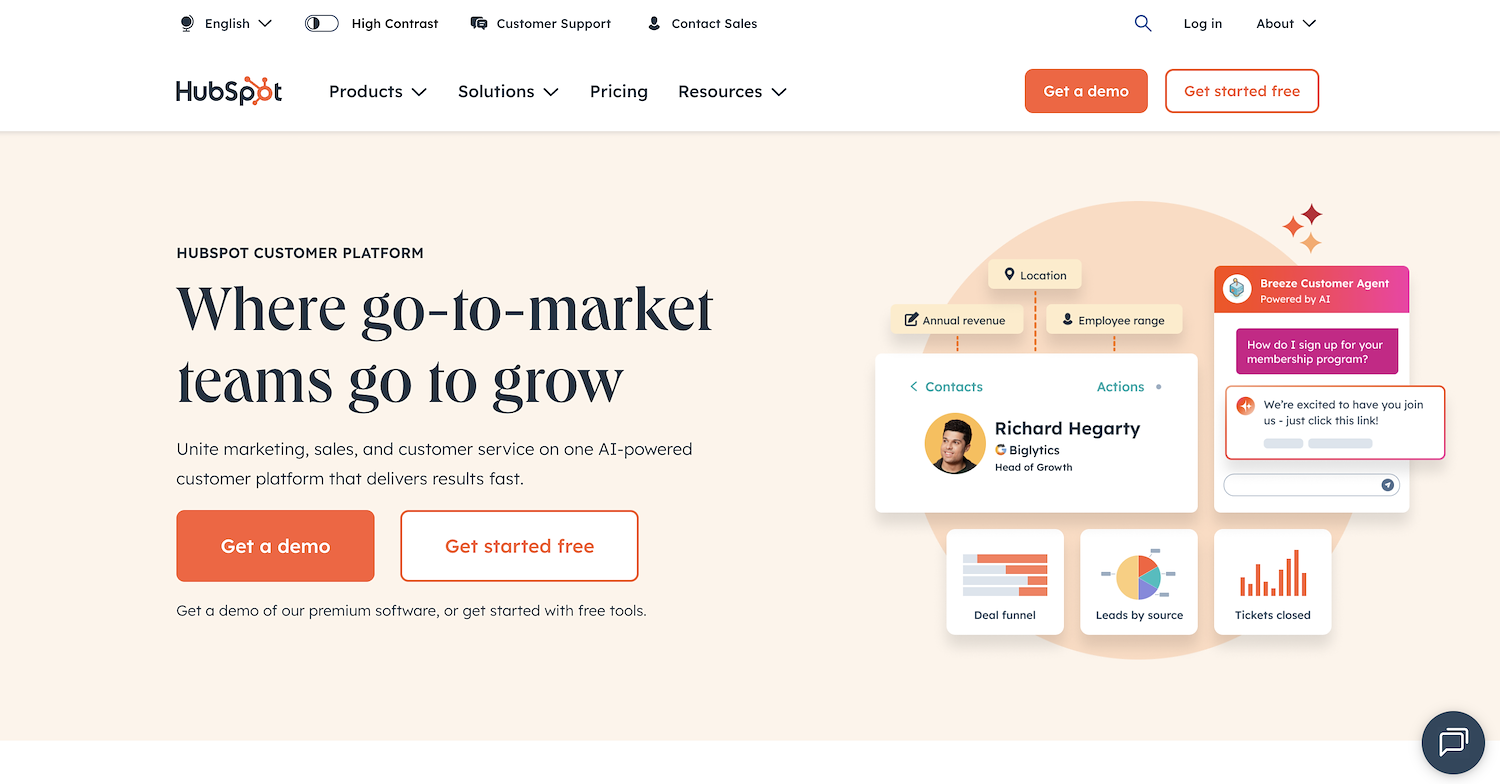
HubSpot Sales Hub is a sales software platform that combines tools for sales engagement, deal management, and pipeline oversight. It helps teams connect with buyers and automate personalized outreach to book more meetings.
The system automatically tracks every interaction with a prospect. Its tools allow sales teams to track emails and calls, use document templates, and manage sales automation from a single interface.
HubSpot Sales Hub's Main Features
- Provides AI agents for 24/7 prospect chat and autonomous lead research with personalized outreach.
- Includes integrated deal management tools for quote creation (CPQ), e-signatures, and payment processing within the platform.
- Offers AI-powered forecasting and predictive lead scoring to provide data-driven insights for sales leaders.
- Contains sales enablement resources such as playbooks, scripts, and coaching dashboards to guide sales reps.
How HubSpot Sales Hub Compares to Salesgear
Average Review score: 4.4/5 stars based on 12,407 G2 reviews.
- HubSpot Sales Hub is built on a native CRM, which provides a single system for customer data and sales activities. Salesgear, in contrast, focuses on outreach and requires integration with a separate CRM.
- The platform includes tools for the entire deal cycle, such as quote creation and e-signatures. This offers a more complete sales solution compared to Salesgear's focus on top-of-funnel sequence management.
- It provides AI-powered forecasting and predictive lead scoring. These features offer deeper data insights than the standard engagement reporting available in Salesgear.
- HubSpot offers sales enablement resources like playbooks and coaching dashboards. This gives reps more guidance than Salesgear, which centers on automating outreach tasks.
Where HubSpot Sales Hub May Fall Short of Salesgear
- HubSpot Sales Hub is a broad platform, which can be complex for teams that only need outreach automation. Salesgear provides a more focused tool for sequence management that is often simpler to adopt and manage.
- The tool's pricing can increase quickly, as many advanced features are available only in higher-cost plans. In comparison, Salesgear may be a more cost-effective option for teams that need dedicated outreach tools without a full CRM suite.
- Some users report that HubSpot Sales Hub has limited customization for specific sales workflows. Salesgear, with its dedicated focus, can sometimes offer more flexibility to build and manage complex sales sequences.
Pricing and Cost-Effectiveness
HubSpot Sales Hub provides a free CRM and paid plans starting at $20 per user monthly. This transparent pricing can be more predictable than Salesgear's quote-based model, though HubSpot's costs rise with advanced features. For detailed pricing, visit HubSpot Sales Hub's official website.
5) Groove
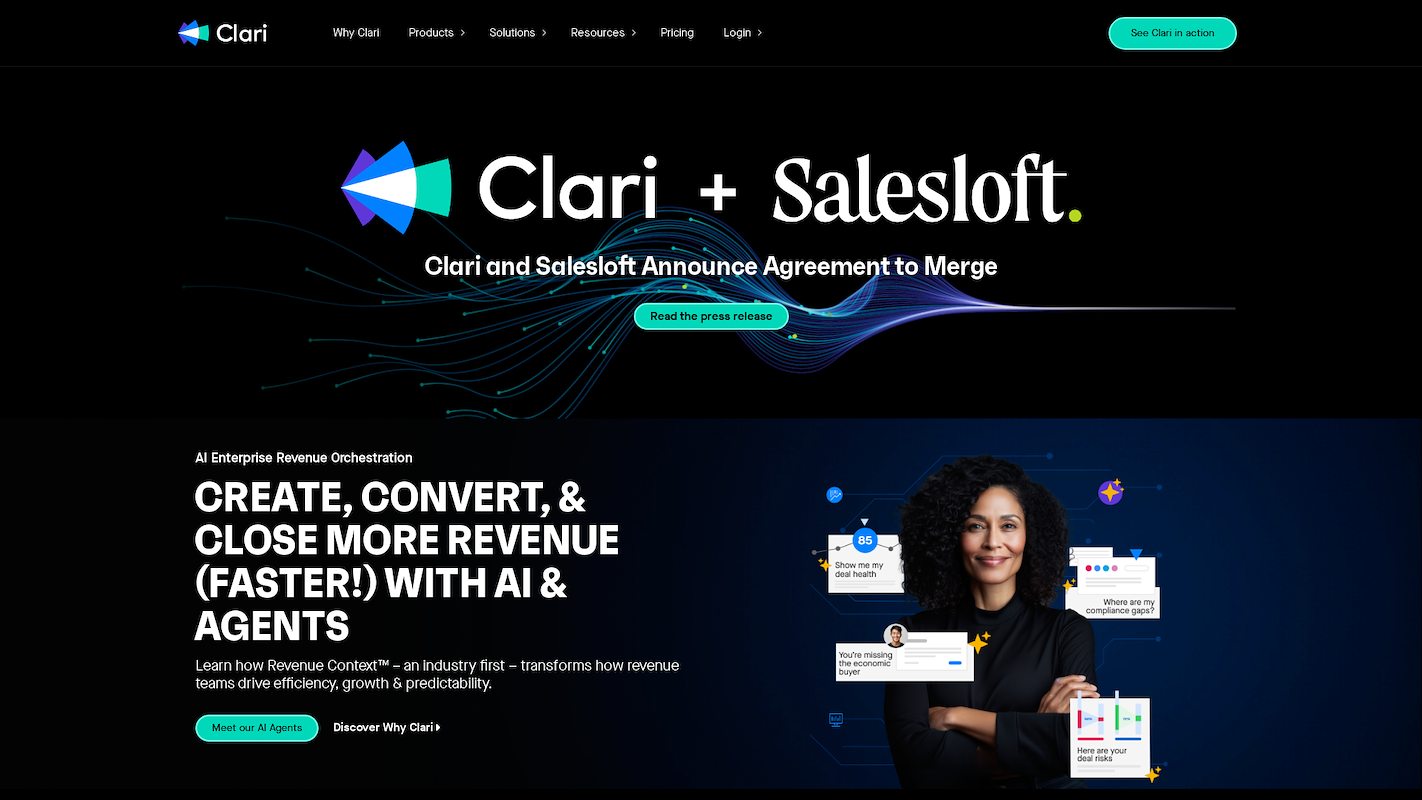
Groove is a sales engagement platform that provides tools for revenue teams. It helps sales professionals manage their workflows and customer interactions. The system is built for sales engagement use cases, where teams need to organize outreach and track activities from a central location.
Groove's Main Features
- Provides a sales engagement platform that integrates with Salesforce to log activities automatically.
- Automates multi-channel campaigns across email, phone, and LinkedIn to connect with prospects.
- Offers templates, a dialer, and a calendar scheduler to manage sales workflows.
- Tracks campaign performance and online buyer activity through real-time analytics.
How Groove Compares to Salesgear
Average Review score: 4.6/5 stars based on 193 G2 reviews.
- Groove provides a shared inbox and ticketing system to manage customer communication, which is different from Salesgear’s focus on individual sales outreach.
- It includes a knowledge base for customer self-service, a feature not found in Salesgear, which is designed for outbound prospecting.
- The platform uses customizable rules to automate support workflows, whereas Salesgear automates multi-step sales communication sequences.
- Groove’s reporting centers on help desk metrics, which contrasts with Salesgear’s analytics on sales engagement and campaign results.
Where Groove May Fall Short Of Salesgear
- Groove is a customer support platform, so it does not have the dedicated sales outreach tools that Salesgear provides. Its automation handles support tickets, which is different from Salesgear's focus on multi-step sales sequences.
- The tool's reporting centers on help desk data, such as ticket volume and resolution times. This differs from Salesgear, which offers analytics on sales campaign results like open rates and prospect engagement.
- Some users report that the platform lacks specific sales functions. For example, it does not include advanced sequence automation or A/B testing tools, which are standard features in Salesgear for outreach.
Pricing and Cost-Effectiveness
Groove offers transparent pricing with plans starting at $15 per user per month, making it a predictable option for teams needing help desk software. In contrast, Salesgear uses a quote-based model for its sales outreach platform. For detailed pricing, we recommend visiting Groove's official website.
Consider 11x for Autonomous Sales Agents
If your goal is to add digital workers to your sales operations, 11x is a platform to consider. It provides autonomous agents that manage specific sales functions, working with your current team to handle tasks from prospecting to outreach.
The platform unifies data enrichment, outreach, and email warmup, which can remove the need for separate tools. To learn more about how its AI agents can support your sales process, visit the 11x website.
With 11x, AI agents manage the sales process. Alice identifies accounts, enriches contact information, and runs outreach. Julian takes calls, qualifies leads, and books meetings. The platform combines data, outreach, and email warmup, removing the need for multiple tools.
Book a demo to see 11x in action.
6) Mixmax
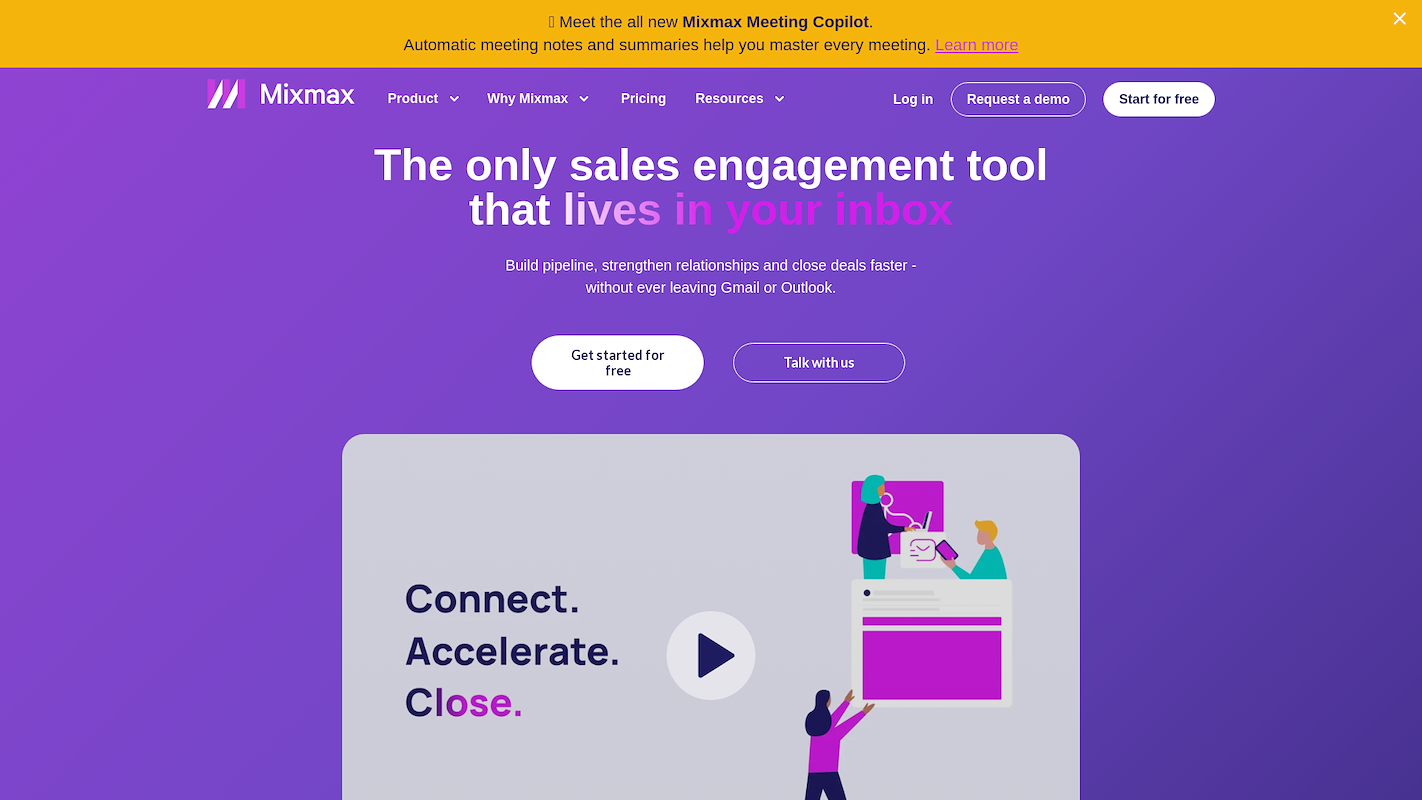
Mixmax is a sales engagement platform that operates inside Gmail. It gives sales teams tools for email tracking, automated sequences, and scheduling directly in their inbox. This allows reps to manage outreach and workflows without a need to switch applications, a benefit for email-reliant teams.
Mixmax's Main Features
- Generates automatic meeting summaries, follow-up email drafts, and full transcripts using its Meeting Copilot.
- Offers one-click meeting links, round-robin, and shared-calendar booking directly inside email.
- Uses an AI Engagement Score to prioritize prospects and provides real-time alerts on email engagement.
- Includes an Inbox Sidechat for internal team collaboration without leaving the email client.
How Mixmax Compares to Salesgear
Average Review score: 4.6/5 stars based on 1,433 G2 reviews.
- Mixmax works directly inside Gmail, which allows sales teams to manage outreach from their inbox. This is different from Salesgear, which requires users to work within a separate application.
- It provides an AI Engagement Score to help prioritize prospects based on their activity. This offers more specific guidance compared to the general engagement tracking available in Salesgear.
- The tool lets users embed polls and surveys in emails for more interactive communication. Salesgear, in comparison, focuses on automating standard email and outreach sequences.
- Mixmax includes an Inbox Sidechat for team collaboration directly within the email client. This offers an internal communication channel that is not a core feature of Salesgear's platform.
Where Mixmax May Fall Short of Salesgear
- Mixmax works only inside Gmail, which can be a drawback for teams that use other email clients. Salesgear is a separate application and does not have this restriction, offering more flexibility.
- Some users find that its sequencing tools are best for email-centric outreach. In comparison, Salesgear is a dedicated platform and may provide more robust options for complex, multi-channel campaigns.
- The tool adds many features directly into the Gmail interface, which some users might find cluttered. Salesgear provides a separate workspace for reps who prefer to keep sales tasks out of their main inbox.
Pricing and Cost-Effectiveness
Mixmax offers transparent pricing with plans starting at $49 per user monthly, which contrasts with Salesgear's quote-based model. This makes Mixmax's costs more predictable, while Salesgear may offer more customized pricing. For detailed pricing, visit Mixmax's official website.
7) Reply.io
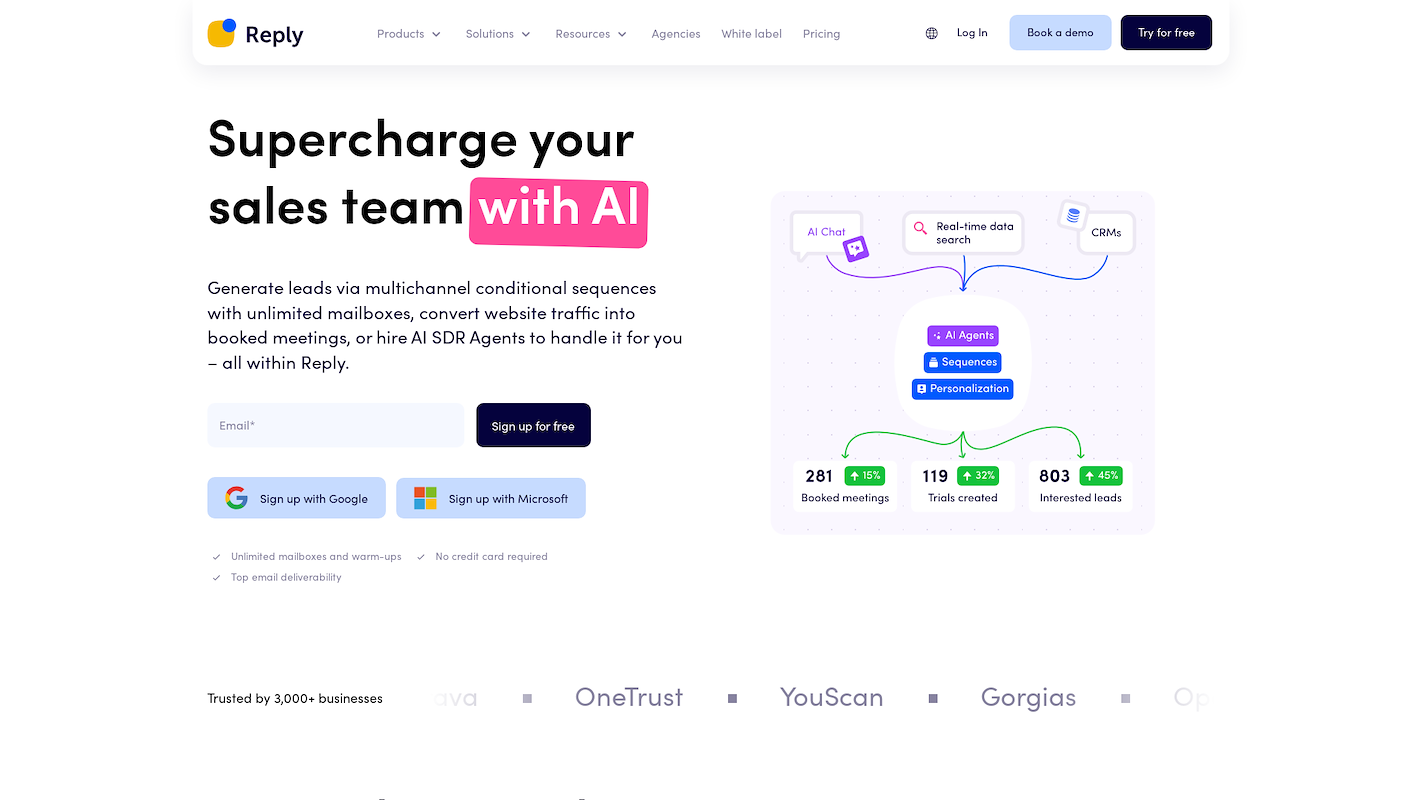
Reply.io is a sales engagement platform that uses AI to automate communication. It helps sales teams find prospects and connect with them through personalized email, LinkedIn, and call sequences. The platform is for outbound sales and helps teams nurture leads to book more meetings.
It combines a B2B contact database with its outreach tools to support sales workflows from a single interface.
Reply.io's Main Features
- Offers an autonomous SDR agent, Jason AI, that handles prospecting, message generation, reply handling, and meeting booking.
- Provides multichannel conditional sequences that combine email, LinkedIn, calls, SMS, and WhatsApp in a single automated flow.
- Includes AI Variables, which are paragraph-level personalization tokens that rewrite each email to be unique at scale.
- Contains a deliverability toolkit with over 30 items, including an email health checker and unlimited mailbox warm-up.
How Reply.io Compares to Salesgear
Average Review score: 4.6/5 stars based on 1,458 G2 reviews.
- Reply.io offers an autonomous SDR agent, Jason AI, which handles prospecting and books meetings. This provides a more hands-off approach compared to Salesgear's focus on user-managed sequence automation.
- The platform supports multichannel sequences that include SMS and WhatsApp. This offers more communication channels than Salesgear, which centers on email and call automation.
- Its AI Variables feature rewrites email paragraphs for unique personalization at scale. This is a more advanced personalization tool than the standard merge tags found in Salesgear's sequence builder.
- The tool includes a deliverability toolkit with an email health checker and unlimited warm-up. This provides more support for email reputation management than Salesgear's standard outreach tools.
Where Reply.io May Fall Short of Salesgear
- Reply.io's broad feature set can introduce complexity for new users. In comparison, Salesgear offers a more focused design for sequence management that some teams may find quicker to adopt for core outreach tasks.
- Some users report occasional issues with its LinkedIn automation features. This can be a consideration for teams that rely on this channel, as Salesgear is generally noted for its reliability in core sequence management.
- The platform's pricing can become a concern for scaling teams, as costs may increase with more advanced features. Salesgear's quote-based model, in contrast, might offer more customized pricing for teams needing only core outreach automation.
Pricing and Cost-Effectiveness
Reply.io offers transparent pricing with a free plan and paid tiers starting at $49 per user monthly. This model provides more cost predictability than Salesgear's quote-based approach. For detailed pricing, visit Reply.io's official website.
8) Mailshake
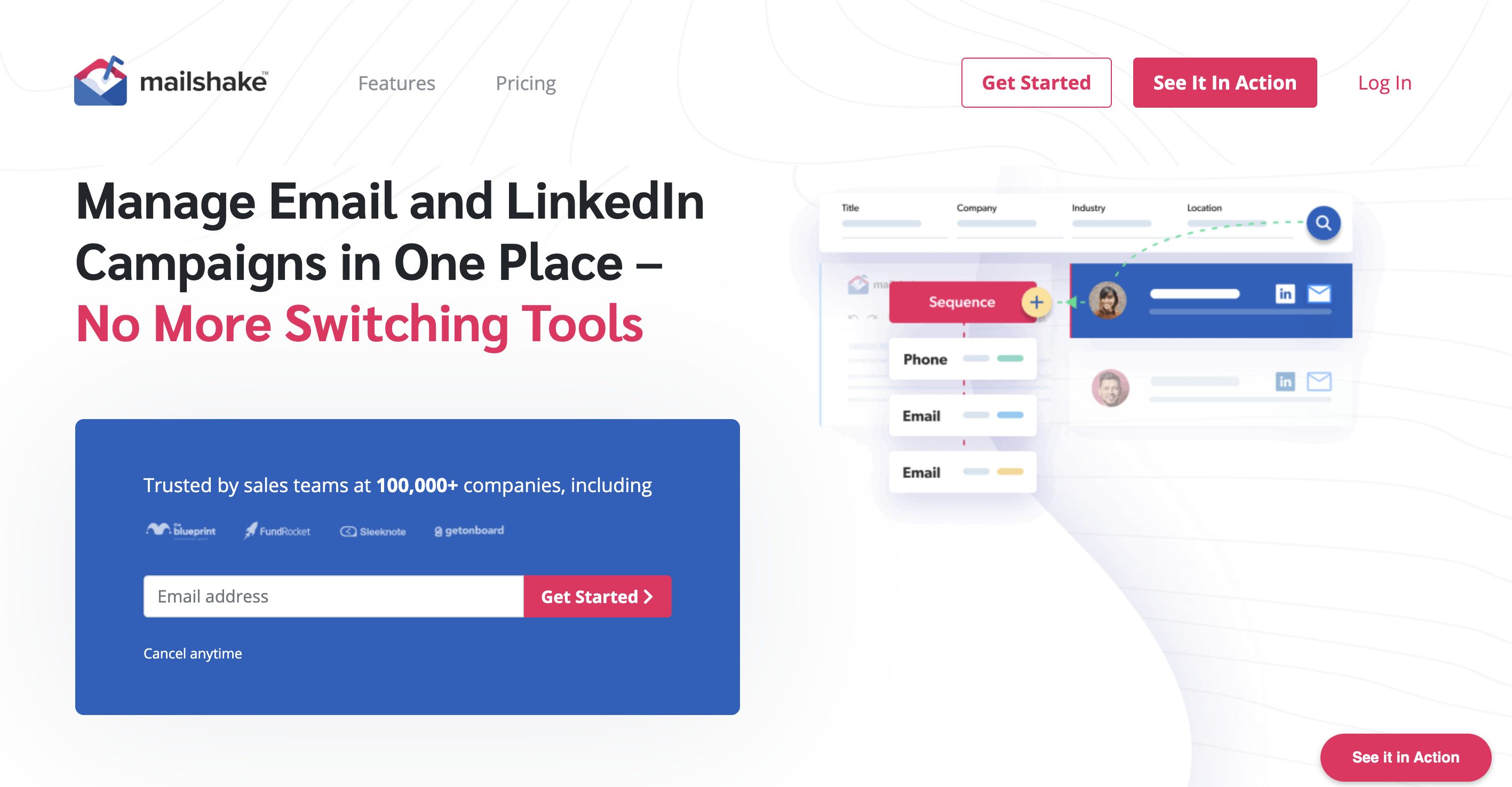
Mailshake is a sales engagement platform for cold outreach. It lets sales teams send personalized emails and automated follow-up sequences to prospects. The tool supports lead generation and helps set appointments, with a central place for users to monitor outreach activity.
Mailshake's Main Features
- Allows users to combine email, phone, and social media tasks into a single outreach sequence.
- Includes lead scoring to help sales teams prioritize which prospects to engage with first.
- Offers scheduling based on the best time of day to increase the chances of engagement.
- Provides task management to organize and track all outreach activities in one dashboard.
How Mailshake Compares to Salesgear
Average Review score: 4.7/5 stars based on 326 G2 reviews.
- Mailshake includes lead scoring to help prioritize prospects. This feature provides a more targeted approach than the general engagement tracking in Salesgear.
- The tool provides scheduling based on the best time of day for outreach. This is a more specific function for engagement compared to Salesgear's standard sequence setup.
- It allows users to combine email, phone, and social media tasks into one sequence. This creates a more integrated multichannel workflow than Salesgear provides.
- Mailshake offers a central dashboard to organize all outreach activities. This gives a broader view of sales tasks, while Salesgear's interface centers on sequence management.
Where Mailshake May Fall Short Of Salesgear
- Some users report that Mailshake's integrations can be limited. This might create challenges for teams with complex tech stacks, while Salesgear may provide more flexible integration capabilities as a standalone platform.
- The tool's customization options for complex sales sequences might feel restrictive. In comparison, Salesgear often provides more advanced logic for users who need to build highly detailed outreach campaigns.
- Mailshake is designed for straightforward outreach, which may not suit teams that need advanced features. Salesgear is built for more complex automation, a better fit for operations that require deeper functionality.
Pricing and Cost-Effectiveness
Mailshake offers transparent pricing with plans at $29, $59, and $99 per month, which provides more cost predictability than Salesgear's quote-based model. This makes Mailshake's costs straightforward for budget planning, while Salesgear may offer more customized packages. For detailed pricing, visit Mailshake's official website.
9) Klenty

Klenty is a sales engagement platform that helps sales teams execute their outreach. The software automates communication sequences across different channels. It also provides a space to manage prospect interactions and monitor campaign performance.
Klenty's Main Features
- Integrates with CRMs like Salesforce, Pipedrive, and Hubspot to help execute custom workflows.
- Automates email outreach and tracks engagement, including open rates, link activity, and attachment interactions.
- Manages sales activities with integrated workflows and task management tools.
- Schedules emails and provides reporting to measure workflow performance and repeatability.
How Klenty Compares to Salesgear
Average Review score: 4.6/5 stars based on 387 G2 reviews.
- Klenty integrates with CRMs like Salesforce and Pipedrive to help execute custom workflows. This provides a more connected experience compared to Salesgear, where users sometimes note integration issues.
- The tool includes a LinkedIn lead capture function for sourcing new prospects. This is a feature not found in Salesgear, which focuses on outreach to existing lists.
- It offers detailed analytics that track link and attachment activity. This provides more granular performance insights compared to the general engagement reporting in Salesgear.
- The platform allows for more flexible sales cadences and custom workflows. This level of customization is a slight improvement over the more standard sequence automation available in Salesgear.
Where Klenty May Fall Short Of Salesgear
- Some users report that Klenty's system can feel laggy at times. This might be a consideration for teams that need a fast experience, which Salesgear's more focused design sometimes provides.
- Its LinkedIn automation capabilities are sometimes noted as limited. In comparison, Salesgear is built for more complex sequence automation, which can be a better fit for teams that need deeper functionality.
- The tool might present a steeper learning curve for teams that need a simple solution. Salesgear, with its focused design on core outreach, can sometimes offer a quicker setup process.
Pricing and Cost-Effectiveness
Klenty offers transparent pricing with plans at $50, $70, and $100 per user monthly. This provides more cost predictability than Salesgear's quote-based model, making Klenty's costs straightforward for budget planning. For detailed pricing, visit Klenty's official website.
10) Lemlist
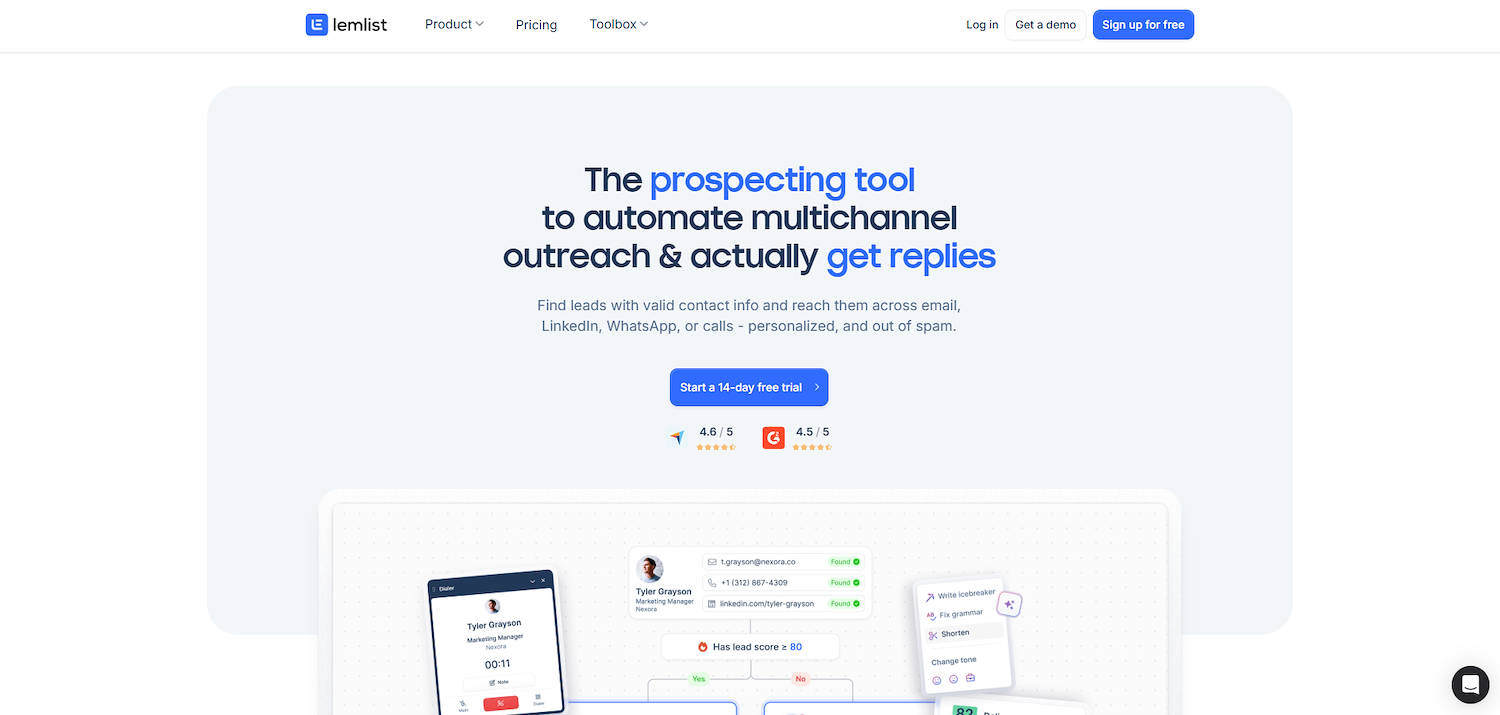
Lemlist is a sales engagement platform for cold outreach. It helps teams connect with prospects through multichannel sequences with email, LinkedIn, and calls. The tool supports custom images and videos in emails to personalize communication, start conversations, and book meetings.
Lemlist's Main Features
- Incorporates dynamic text, images, and videos into messages for advanced personalization.
- Integrates with LinkedIn via a Chrome extension to find, connect, and message prospects.
- Includes a calling feature to add phone calls into outreach sequences and log call outcomes.
- Provides email deliverability tools to monitor and optimize sending practices to avoid spam folders.
How Lemlist Compares to Salesgear
Average Review score: 4.4/5 stars based on 276 G2 reviews.
- Lemlist allows users to add dynamic images and videos to emails for advanced personalization. This offers a more visual approach compared to the standard text-based sequences in Salesgear.
- It integrates with LinkedIn through a Chrome extension for direct prospect engagement. This is different from Salesgear, which operates as a separate application for outreach tasks.
- The tool includes a native calling feature to add phone calls into outreach sequences. This provides a more integrated function for voice communication compared to Salesgear's general sequence management.
- Lemlist provides email deliverability tools to help avoid spam folders. This offers more support for email health than the standard outreach functions in Salesgear.
Where Lemlist May Fall Short Of Salesgear
- Some users report that Lemlist's interface, with its many personalization options, can feel less intuitive for building complex campaigns. Salesgear, in contrast, provides a more focused environment dedicated to sequence automation and management.
- The platform operates mainly through a Chrome extension, which might limit its use for teams not centered on Gmail and LinkedIn. Salesgear functions as a standalone application, which can offer more flexibility with different email clients and deeper CRM integrations.
- Its campaign management tools may feel less comprehensive for users who need detailed reporting on complex sequences. In comparison, Salesgear centers its functionality on sequence performance, which can provide more in-depth analytics for outreach optimization.
Pricing and Cost-Effectiveness
Lemlist offers transparent pricing, including a free plan and paid tiers starting at $55 per year. This model provides more cost predictability than Salesgear's quote-based approach, making it a straightforward option for budget planning. For detailed pricing, visit Lemlist's official website.
Which One Should You Go With?
Choosing a Salesgear alternative depends on many variables, including your team’s needs, budget, and existing workflow. This guide shared several options to help you compare features and make an informed decision for your sales operations.
If your goal is to augment your sales team with autonomous agents, 11x offers digital workers for prospecting, outreach, and lead qualification. This approach can help automate sales functions and reduce the need for multiple separate tools.




